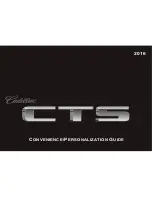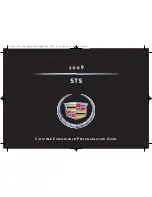
The valve stems on your run-flat tires have sensors that
are part of the Tire Pressure Monitor System (TPMS).
See
Tire Pressure Monitor System on page 5-58. These
sensors contain batteries which are designed to last
for 10 years under normal driving conditions. See your
dealer if you ever need to have a wheel replaced,
or if the sensors ever need replacement.
Notice: Using liquid sealants can damage the tire
valves and tire pressure monitor sensors in your
run-flat tires. This damage would not be covered
by warranty. Don’t use liquid sealants in your
run-flat tires.
Inflation - Tire Pressure
The Tire and Loading Information label, shows the
correct inflation pressures for your tires when they’re
cold. “Cold” means your vehicle has been sitting for
at least three hours or driven no more than 1 mile
(1.6 km). See
Loading Your Vehicle on page 4-32
for more information on the Tire and Loading
Information label.
Notice: Don’t let anyone tell you that underinflation
or overinflation is all right. It’s not. If your tires
don’t have enough air (underinflation), you can get
the following:
•
Too much flexing
•
Too much heat
•
Tire overloading
•
Bad wear
•
Bad handling
•
Bad fuel economy
If your tires have too much air (overinflation), you
can get the following:
•
Unusual wear
•
Bad handling
•
Rough ride
•
Needless damage from road hazards
5-57
Summary of Contents for 2004 XLR
Page 5: ...These are some examples of vehicle symbols you may find on your vehicle v...
Page 6: ...NOTES vi...
Page 12: ...Put someone on it Get it up to speed Then stop the vehicle The rider doesn t stop 1 6...
Page 56: ...NOTES 1 50...
Page 113: ...NOTES 3 3...
Page 114: ...Instrument Panel Overview 3 4...
Page 224: ...NOTES 4 38...
Page 236: ...Engine Compartment Overview When you open the hood you ll see 5 12...
Page 316: ...NOTES 5 92...
















































